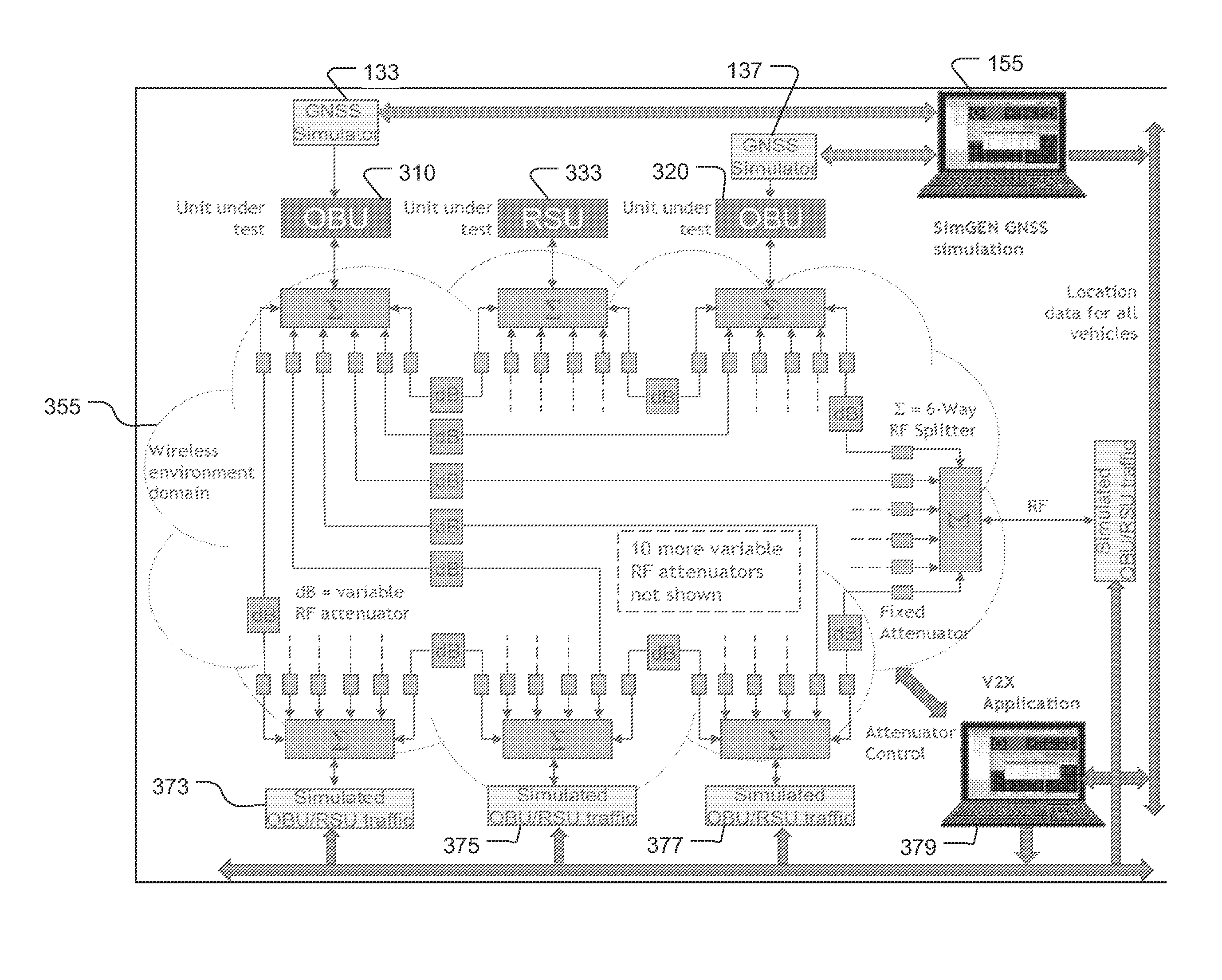Connected vehicle application testing in the laboratory
a connected vehicle and laboratory technology, applied in the direction of traffic control systems, instruments, structural/machine measurement, etc., can solve the problems of difficult integration of complex systems into motor vehicles, radio signals are prone to interference and blockage, and present significant challenges both technological and logistical
- Summary
- Abstract
- Description
- Claims
- Application Information
AI Technical Summary
Benefits of technology
Problems solved by technology
Method used
Image
Examples
Embodiment Construction
[0016]A detailed description of implementations of the technology disclosed is provided with reference to the FIGS. 1-3.
[0017]The technology disclosed bridges the gap between field trials and pure computer simulation by synthesizing the dynamic radio environment in the laboratory, harnessing the power of computer simulation whilst including in-vehicle hardware and software.
Glossary of Terms
[0018]Connected Vehicle means a vehicle equipped with navigation, proximity and other sensors which may communicate via radio signals in a coordinated way with other similarly equipped vehicles and roadside infrastructure for the purposes of road safety, traffic management, data transfer or similar applications.
[0019]On Board Unit (OBU) means a package of electronics and associated sensors that, when installed in a target vehicle, provide the ‘Connected vehicle’ functionality. Such sensors may include, but not be limited to, GPS, Radar, Lidar, Infra-red and wheel motion.
[0020]Roadside Unit (RSU) m...
PUM
 Login to View More
Login to View More Abstract
Description
Claims
Application Information
 Login to View More
Login to View More - R&D
- Intellectual Property
- Life Sciences
- Materials
- Tech Scout
- Unparalleled Data Quality
- Higher Quality Content
- 60% Fewer Hallucinations
Browse by: Latest US Patents, China's latest patents, Technical Efficacy Thesaurus, Application Domain, Technology Topic, Popular Technical Reports.
© 2025 PatSnap. All rights reserved.Legal|Privacy policy|Modern Slavery Act Transparency Statement|Sitemap|About US| Contact US: help@patsnap.com



